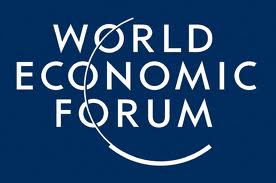- While coal will remain a major source of energy for some time, growth of renewable sources is accelerating
- China’s shift to a renewables-driven energy mix and to distributed energy systems is a driver of global change
- The Annual Meeting of the New Champions 2016 is taking place in Tianjin, People’s Republic of China, from 26 to 28 June
- Follow the Annual Meeting of the New Champions 2016 (#amnc16) at http://wef.ch/amnc16
Tianjin, People’s Republic of China, 27 June 2016 – The global climate change agreement reached in Paris at the end of last year is proving to be a game-changer in driving global shifts in the energy market, industry experts agreed in a session on the global energy outlook at the Annual Meeting of the New Champions 2016.
“Ever since Paris, we have observed changes in dynamics of supply and demand,” said Han Wenke, Director-General of the Energy Research Institute (ERI) in China. “World energy is at a transition point.” He added: “We see growth in low-carbon sources. The future energy mix will be non-fossil based, and high-pollution, high-carbon energy sources will be phased out in the next 50-100 years.”
In this transition, a key driver is the move from centralized energy to distributed systems, in which consumers have more control of sources of energy and how they are used. “There is a revolution in energy around the world,” reckoned Iain Conn, Chief Executive Officer of UK-based energy group Centrica, the parent company of British Gas. “Paris has changed things from top-down solutions to bottom-up solutions. We now know what we need to do. But there is no single answer.”
What is clear, Conn argued, is that “power has shifted towards the customer.” With more choice in energy sources and the growth in data on customer demand and usage, there is a shift to distributed energy systems, which is driving further the diversification of energy sources, Conn observed. Other factors are more widespread knowledge of how to deliver and use energy efficiently and the framing of smarter regulation.
To be sure, fossil fuels will continue to dominate – and carbon emissions are still going to rise for some time. “Energy is a long-term decision we have to make,” stressed Geoffrey Qhena, Chief Executive Officer of the Industrial Development Corporation of South Africa (IDC). “It is key for industrial development. We have to allow for coal in the medium term, while at the same time accelerating renewables.” Even a small shift from coal to natural gas removes from the atmosphere a significant amount of greenhouse gases, Conn reminded participants.
“The priority focus now is on low carbon,” said Gao Jifan, Chairman and Chief Executive Officer of Trina Solar. In China and India, governments have accorded strategic importance to their efforts to promote clean energy, he remarked. “Low carbon is inevitable. But to achieve it, we need to join forces.” This means the collaboration of industry, technology companies particularly in the area of storage, financial institutions to support the development of technology and new industries, and of course governments. “To support low-carbon energy, we need clear policy measures to safeguard development,” Gao explained.
The Paris climate change agreement will be a major driver of change in the energy sector for the next 15 years, concurred Changhua Wu, Director, China, of TIR Consulting. Yet, “no matter what the scenarios, coal will continue to be part of the energy structure, so solving the coal issue in this region is still part of the dynamics. Clean energy requires systems change and all technologies to play a role.” Wu told participants that cities can become major platforms for delivering the solutions needed to achieve a low-carbon environment.
China, which is now the largest clean-energy market, will play a key role in catalysing the emergence of the new world of renewable energy. Conn noted that China is making efforts to reduce the intensity of energy per unit of GDP and is showing signs of opening its energy market to real competition. According to Gao, China has ambitious plans for building its wind and solar capacity.
While the government has yet to release the energy section of its 13th Five-Year Plan, indications are that it continues the decade-long campaign to reduce greenhouse gas emissions and provides a blueprint for further energy-sector reforms to fit China’s goal of delivering medium-high, stable and sustainable growth. “If China can work over the next five to 15 years to build a new energy mix, this will benefit China’s and global development,” Han concluded. |

